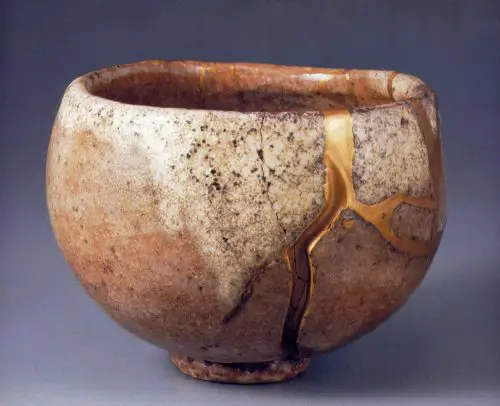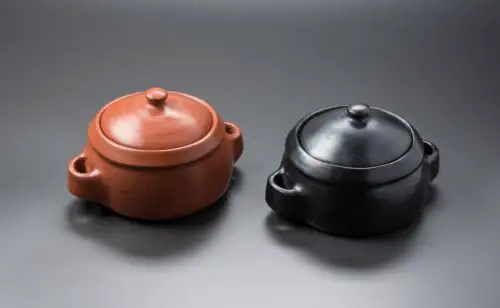Translated by Nick R
Do you enjoy learning the history of ceramics, where it comes from, and how some techniques were born? Then you are in the right place because, in our blog, we like to share with you that history. Japanese ceramics is one of the oldest, and you will learn all about it today.
Probably you have seen Japanese porcelain and ignored all the background behind these pieces, but don’t worry because I will show you the great history of this pottery, its distinctive characteristics, and some of the most significant pieces in its history.
Table of Contents
Japan and ceramics
Japanese pottery is one of the oldest and most relevant pottery traditions in history, becoming a sure reference for the different types of pottery existing around the world.
The first traces of Japanese pottery can be traced back to the Jōmon period, which began approximately 14,500 B.C. and lasted until 300 B.C. Its techniques were very manual and traditional, for example, producing forms by means of strips, strings, or threads.
Chinese immigrants arrived with new techniques, more sophisticated kilns, and additional materials like earthenware and lead. This influenced Japan to develop more subtle and detailed new ones.
Characteristics of Japanese ceramics
1. All pieces are made in stoneware or porcelain. Although porcelain appeared many years after stoneware, it still prevails in Japanese ceramics.
2. Japanese pottery and porcelain were influenced by the Chinese and Koreans. Japan managed to transform and adopt some prototypes from these two countries to turn them into purely Japanese pieces.
3. One of the main characteristics of Japanese ceramics is that their beauty lies in the simplicity and asymmetry within each of their handmade pieces. If you are wondering why asymmetry? You will understand later.
4. The perfection and beauty of Japanese ceramics are precisely in their imperfection. It can be said that you can appreciate the beauty of the imperfect within the pieces. Accidental deformations, such as cracks or granules, are an example of this.
Such deformations could occur because the pieces were made by hand, and there could be minor errors or because the kiln fire caused changes.
5. The fire stains are another unique and striking aspect of Japanese ceramics.
6. The irregularity or deformity of the pieces makes them unique items; with their own personality and allows none of the ceramics to be the same as others, even if they were produced in the same production.
7. The basis of the aesthetics of Japanese ceramics is the appreciation for simplicity and modesty, highlighting the imperfections of the ceramic generated in its natural and artisanal processing. This is the hallmark of Japanese ceramics.
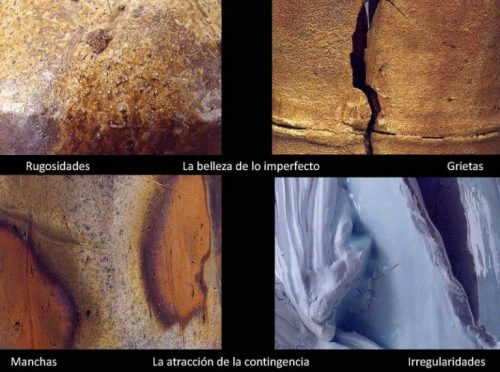
Regional differences
There are, in all types of art worldwide, differences in the creation depending on the place and conditions of origin. And Japanese ceramics is no exception.
That is why we will briefly show you the differences in Japanese porcelain among the 6 regions of this country.
Kutani
The porcelain from the Kutani region is distinguished because its engravings are colorful and depict nature scenes. We assure you that you will rarely find a single centimeter of these pieces without dyes.
It also stands out for introducing, for the first time, the Saji calligraphy to cover the pieces with poems of that time in a very detailed manner.
Arita
This city is one of the principal ambassadors of Japanese ceramics internationally. It harbors two museums with unique pieces and tours to talk about the history of porcelain and its establishment in the country.
Its porcelain can be divided into two types: one with blue and white motifs and another with vibrant, eye-catching tones. These are the styles that most closely resemble European porcelain because, for a time, Arita ware was exported to the West by foreigners residing on a nearby island.
Karatsu
Karatsu pottery was greatly influenced by the Korean master potters during the Imjin War, and this type of pottery was used for making bowls, basins, and plates. Today this pottery is one of the most renowned for use in the famous tea ceremony of this country.
Mino
Mino ceramic is widely appreciated since 50% of the pieces that were used in all of Japan came from this city due to the installation of many machines to create ceramics in this region.
In Mino ceramics, the use of yellow, green, gray, and black colors to draw leaves and branches on monochromatic backgrounds stands out.
One of the largest pottery festivals in the world is held in Mino every three years. It lasts a month, and over three thousand works by international artists are exhibited during that month.
Seto
Seto ware is believed to be one of the most relevant ceramics in Japan because the word they use as the umbrella term for any type of porcelain is “setomono”.
We can identify their pottery by the glossy lacquer finish and simple and somewhat robust forms. The lack of some tools meant that Seto ware had a rather coarse style, in contrast to the attractiveness of its glossy glaze.
Bizen
This is the oldest technique and is still in use today. The pieces look rudimentary, poorly executed, undecorated, dull and of pale colors with a worn appearance.
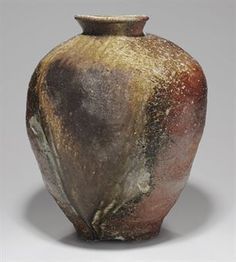
History of Japanese ceramics
Japan is the country with the world’s longest history in earthenware pottery manufacture. Japanese pottery originated in the Jōmon period; approximately 16,000 years ago.
The tradition of pottery originated because the artisans who first made it wanted only to solidify the clay to extend its useful life, unaware that they were inventing a new art and technique for storing and transporting food.
The items found dating from the Jōmon period include all kinds of large kitchen utensils adorned with strings. It was a very functional art and was at the service of the population’s needs.
Over time, new techniques were implemented from different regions of the country. The Anagama kiln, Chinese in origin, had several underground chambers with separations between each compartment to maintain combustion. This meant that no two firings were alike, and thus the ash particles gave a different touch to each piece.
This kiln was what allowed the manufacture of stoneware at high temperatures; one of the most distinctive aspects of this ceramic was born from there.
The mid-sixteenth century saw the golden age of Japanese porcelain, which was possible by establishing numerous pottery workshops in the country. Most of them were devoted to the production of teaware, a practice that had started to spread throughout the country by then.
Tea and cooking have always influenced the development of Japanese ceramics as they have always gone hand in hand; Japanese potters, as in any other part of the world, adapt to the needs of their society.
The shape and decoration of the pieces changed radically in the 3rd century B.C. when a new style arrived from Korea and China. Becoming Japanese pottery’s main influence on what it became and what it is today.
This new type of pottery was called Yayoi and was based on simpler, smaller forms and soberer and restrained decoration.
From the 11th to the 16th century, Japan imported a particular type of Chinese pottery called Celadon, as well as white porcelain and blue and whiteware.
As everything evolves over the years, in the 17th century, kilns began to produce lead-glazed ceramics, which nowadays are the glazes we use so much.
Here appears the manufacture of the other principal Japanese ceramic material: porcelain. White clay was discovered in the city of Arita in the early 17th century, leading to the establishment of more and more kilns throughout the country.
Local merchants established new kilns (and some old ones like Seto) that turned from stoneware kilns into porcelain kilns. These were called “new kilns”.
Years of experimentation and production of different types of stoneware and porcelain pieces led to an exponential growth of a large portion of the Japanese ceramic industry in the 20th century, with the beginning of the manufacture of everyday objects. So vast was its growth that it continues to be extremely important in today’s ceramics.
Modern Japanese ceramics
In modern Japanese pottery, potters continue to work with porcelain and stoneware to create classic pieces such as vases, bowls, trays, plates, and other modern ones like abstract objects, frequently breaking schemes that were already established.
However, it is worth noting that, not only the classic features of Japanese ceramics have been maintained, but also that they were made with a capacity for innovation and an incredible level of excellence among all the ceramists.
There have been few changes in production and decoration according to the vision of each potter, for example, a lowered manufacturing of utilitarian or typical items. Nevertheless, the Japanese essence is still present in each of the pieces.
A more global vision of ceramics is an aspect that has a strong influence on modern ceramics, as artists do not just stick to the techniques of their ancestors, but instead, they bring a few other techniques from around the world.
A very good example of modern Japanese ceramics that has not forgotten its roots is a piece by the artist Karsumata Chieko, who likes to create plant-like objects of unreal textures and colors.
This piece is made with Shigaraki clay, which appeared at the end of the 13th century in the Japanese city. The clay’s composition creates a rough texture caused by the explosion of small whitish granules during firing. This is why her piece has such a rustic appearance and looks so fascinating. It makes you want to touch it, doesn’t it?
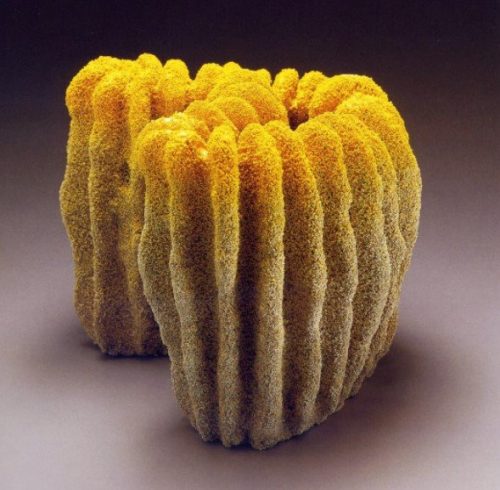
Main Japanese pottery pieces
Whether they are traditional or modern pieces of Japanese ceramics, it is certain that you will always find high quality, functionality, and practicality within them. Some of the Japanese pottery’s most outstanding pieces (some of which have been used for thousands of years) are:
- Rice bowls
- Teapots
- Mugs
- Soy sauce dispensers
- Burial urns
- Cooking pots
Rice bowls
A piece utilized in daily life in the Japanese culture that has evolved over time in terms of decoration, but not in terms of production as it has always had the same use and shape.
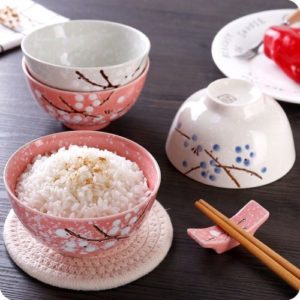
Teapots
This type of piece has a long history in Japan. It comes in many forms that have changed a lot over the years, as well as the techniques of production have done. It is used in traditional tea ceremonies.
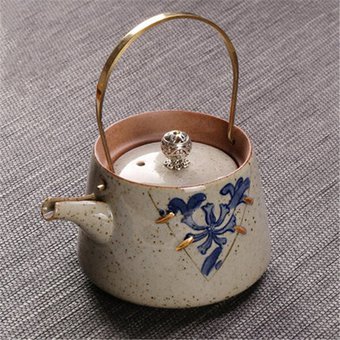
Mugs
Teacups are among the most used ceramic pieces in Japanese culture for the same reason as teapots, the famous tea ceremony. This ceremony has a spiritual meaning for them; it is a way to purify the soul by uniting with nature.
The majority of these cups do not have handles or ears thanks to the cultural tradition of holding a cup with both hands or a full hand. As tea is served at a medium temperature to dissolve the sugar more slowly and preserve the flavor.
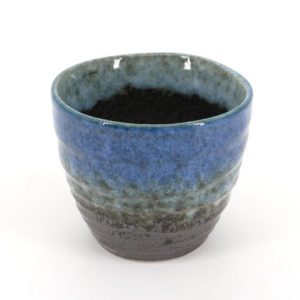
Soy sauce dispensers
Soy sauce is strongly rooted in the preparations of the Japanese culture and that is why a specialized dispenser has been made to store it. This dispenser, which is inside modern Japanese ceramics (pictured below), is from the Hakusan Porcelain brand from Hasami, a Japanese city.
You can tell it is modern because its shape is very different from the normal ones and because it has a very special function; when putting your finger on the lid’s hole, the sauce will stop flowing out as if the pouring hole was plugged.
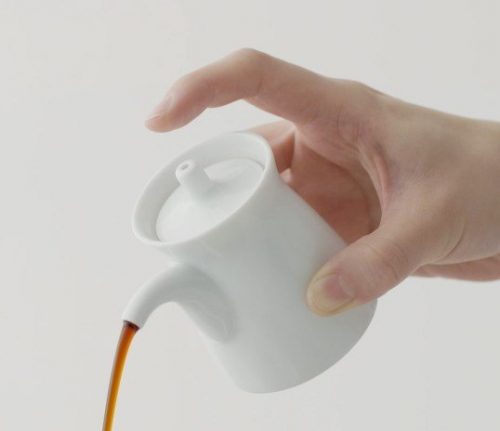
Burial urns
They are internationally recognized Japanese pieces, and I’m sure we have all seen a Japanese funerary urn once. It is the recipient in which the decease’s ashes are kept, which has a great meaning for them given the cultural importance and respect for their relatives.
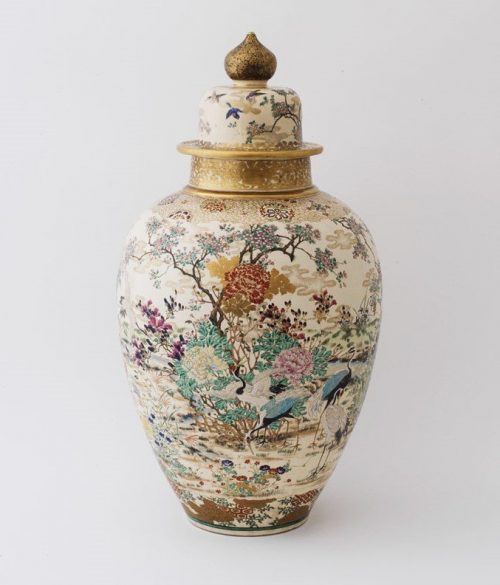
Cooking pots
Pans and any type of container used for cooking are considered the most important element of Japan’s ceramic production, as every house must have at least one in its kitchen.
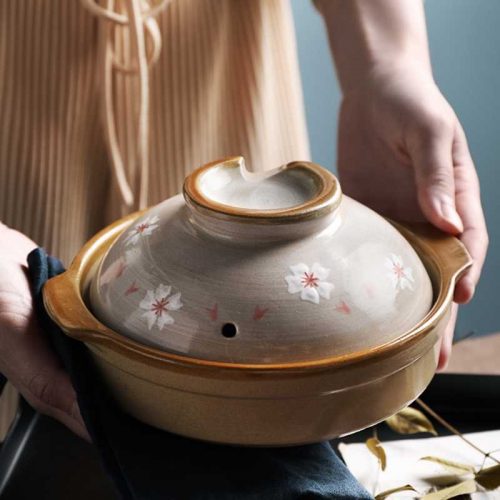
Where you can find these pieces
Tokyo National Museum
The Tokyo National Museum is the largest and oldest museum in all of Japan, dating back to 1872. Visiting this museum is a great way to get acquainted with the culture and history of the country.
It has a large collection of archeological and artistic artifacts from various periods of Japan and other Asian countries such as China. It is located at 13-9 Uenokoen, Taito City, Tokyo 110-8712, Japan. But as we know it’s probably a bit far from your country, we suggest you take the virtual tour and see all these gorgeous pieces.
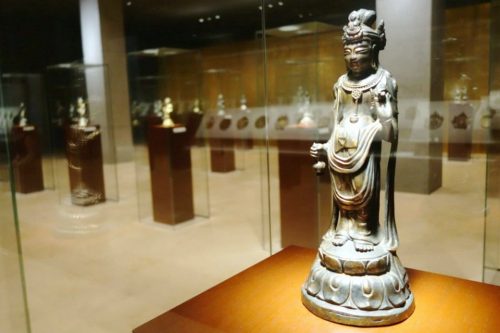
Museum of Decorative Arts of Madrid
This museum, located at Calle de Montalban, 12, 28014 Madrid, Spain, was founded in 1982 and houses an extensive collection of 3,986 objects from different decorative arts.
The Museum of Decorative Arts has a collection of pieces from Japan and China that date from the 17th century onwards. These pieces attract visitors’ attention due to the artistic tradition behind each one of them.
Check for the fees and schedule on their website.

We have come to the end of this blog about fantastic Japanese ceramic and its history. We hope we have satiated your desire for knowledge of the history of ceramics and that you now have many curious facts to tell your family and friends.
If you want to know more about the history of ceramics around the world, keep reading our Ceramics Club, there, you will find blogs about pottery in Colombia, Greece, and the European region.

